If you’re an avid hunter, having a well-trained bird dog can enhance your hunting experience. However, training a dog to hunt birds effectively requires a combination of patience, dedication, and understanding of the hunting instinct in dogs. Whether you’re a seasoned pro or a novice, this guide will provide you with tips and techniques to train your dog to become a skilled bird hunting companion.
In this guide, we’ll cover everything from basic obedience training to advanced bird hunting techniques. You’ll learn about the best breeds for bird hunting, how to introduce your dog to gunfire, and how to build a strong bond with your hunting companion.
If you’re ready to take your hunting game to the next level, let’s get started!
- Training a bird dog requires patience, dedication, and understanding of the hunting instinct in dogs.
- Breeds that are best suited for bird hunting include pointers, setters, retrievers, and spaniels.
- Early puppy training is crucial for developing hunting skills in dogs.
- Basic obedience training is a must before progressing to advanced hunting training.
- Developing your dog’s ability to detect and follow bird scent is crucial for successful hunting.
Understanding the Hunting Instinct in Dogs
Before embarking on training a dog for bird hunting, it is important to understand their inherent hunting instincts. Hunting is a natural behavior in dogs, and has been a part of their survival for thousands of years. While different breeds may have varying levels of hunting instincts, every dog has a fundamental desire to hunt.
The hunting instinct involves a combination of sight, sound, and scent, and can be triggered by various stimuli such as movement, noise, or smell. Dogs possess a set of physical and behavioral traits that make them well-suited for hunting. Their keen senses, agility, and tenacity make them excellent hunters and valuable companions.
It is important to recognize that the hunting instinct in dogs can be both a blessing and a curse. Untrained hunting dogs may exhibit problematic behaviors such as chasing other animals, digging, or escaping from their homes. However, when trained properly, hunting dogs can channel their instincts towards a productive and enjoyable activity.
In addition to physical traits, hunting dogs also possess specific behavioral traits that make them ideal for hunting. Most hunting breeds are highly energetic and have an intense drive to work and please their owners. They are typically very social animals, and thrive on human interaction and guidance. This makes them highly trainable and responsive to positive training methods.
Understanding your dog’s natural hunting instincts and behavioral traits is vital for a successful hunt. With proper training and guidance, you can harness your dog’s hunting abilities and enjoy a rewarding hunting experience together.
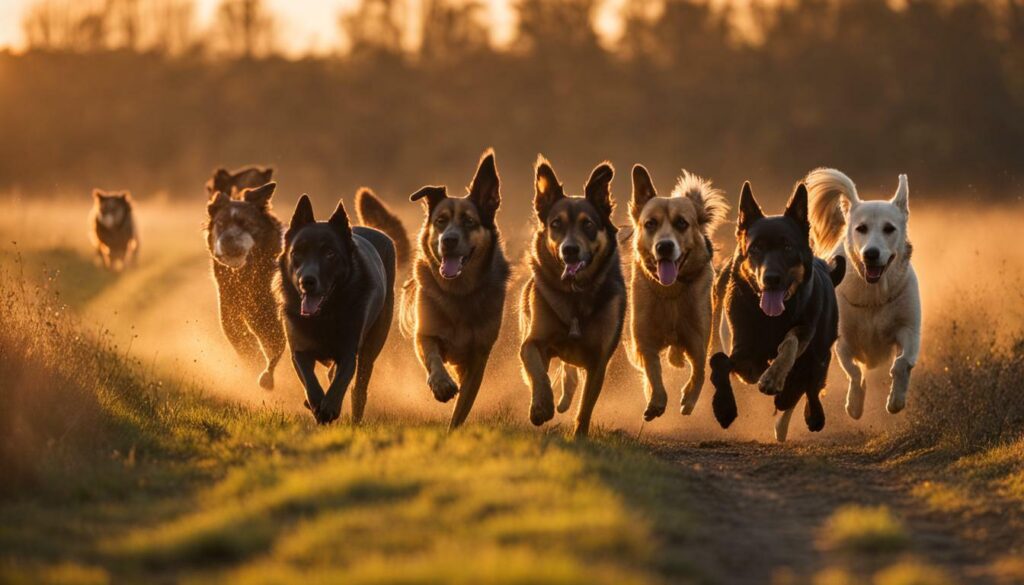
Before embarking on training your furry friend to become a bird hunting dog, it is important to select the ideal breed that suits the purpose. While any breed can be trained to become a hunting dog, certain breeds have inherent qualities that make them most suitable for the task at hand.
While Labrador Retrievers and English Setters are popular bird hunting dog breeds, there are many other breeds that can make excellent hunting companions. For instance, Pointers, Spaniels, and German Shorthaired Pointers are also great choices for bird hunting.
When choosing a breed for bird hunting, consider the dog’s temperament, size, and energy level. A good hunting dog breed should have a high level of energy, be trainable, and have an eagerness to please their owner.
Another consideration is the breed’s natural instincts. Breeds that have been specifically bred for hunting, such as the Pointer and English Setter, are more likely to have a strong hunting instinct than breeds that have not been bred for the same purpose.
| Breed | Traits |
|---|---|
| Labrador Retriever | Friendly, obedient, loyal, great retrieving skills |
| English Setter | Intelligent, energetic, superior sniffing abilities, signals when prey is located |
| Pointer | Smart, hardworking, athletic, strong hunting instincts, quick to point out prey |
| German Shorthaired Pointer | Sharp, fast, birdy, friendly, versatile in water and land |
| Spaniel | Friendly, happy, eager to please, great flushing, and retrieving skills |
Ultimately, it’s important to choose a breed that is compatible with your lifestyle and hunting needs. Consider your hunting terrain, the species you plan to hunt, and the weather conditions of your hunting location.
Keep in mind that training a dog for bird hunting requires a significant investment of time and effort. Therefore, it’s crucial to choose a breed that is well-suited to the task and has a strong hunting instinct. With the right breed, patience, and proper training techniques, your pup can become a skilled bird hunting companion.
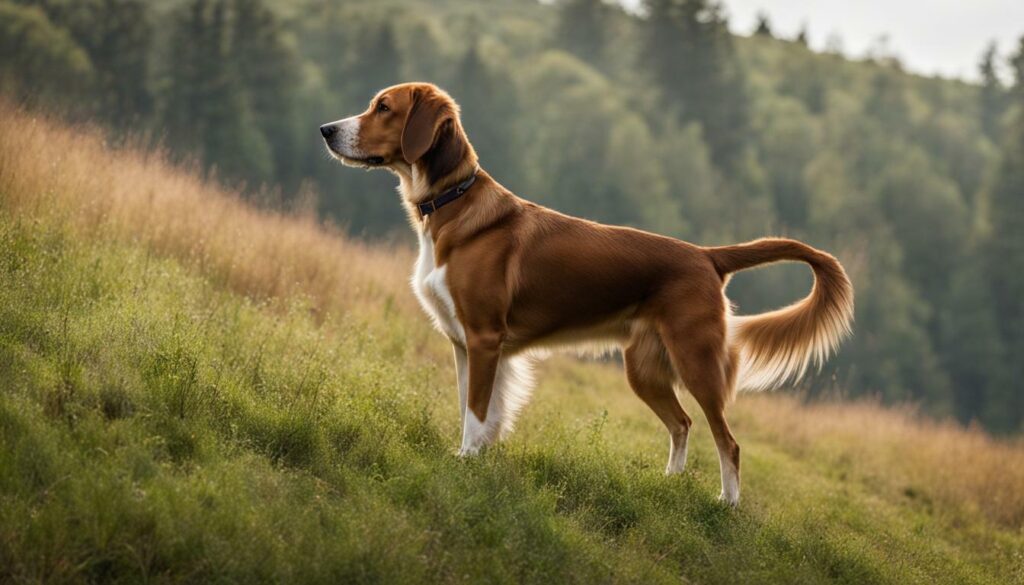
Early training is crucial for developing hunting skills in your dog. By starting the training process during the puppy stage, you can provide a solid foundation that will carry through to their hunting skills as they mature. In this section, we will cover essential puppy training techniques specific to bird hunting.
Tip: Keep in mind that puppies have short attention spans, so training sessions should be short and frequent to prevent boredom and frustration. Keep the training fun and positive, and always end on a positive note.
Socialization: Socialization is essential for puppies in general, but especially for hunting dogs. Exposure to various people, animals, and environments during the critical socialization period can help them become confident and well-adjusted adult dogs. Take your puppy to different places, such as parks, pet stores, and hiking trails, and introduce them to different people and animals.
House Training: House training is a crucial step in puppy training. It is important to establish a routine and stick to it to prevent accidents in the house. Take your puppy outside frequently, and praise them for eliminating outside. Crate training can also be useful for house training and providing a safe space for your puppy when you are not home.
Introduction to Basic Commands: Training your puppy basic commands, such as “sit,” “stay,” “come,” and “heel,” is crucial for developing good behavior and obedience. Start with one command at a time, and use positive reinforcement, such as treats and praise, to encourage compliance.
Introduction to Live Birds: Introducing your puppy to live birds can help develop their natural hunting instincts. Start with live quail or pigeons in a controlled environment, such as a fenced-in yard or training field. Encourage your puppy to chase and retrieve the birds, and reward them with treats and praise.
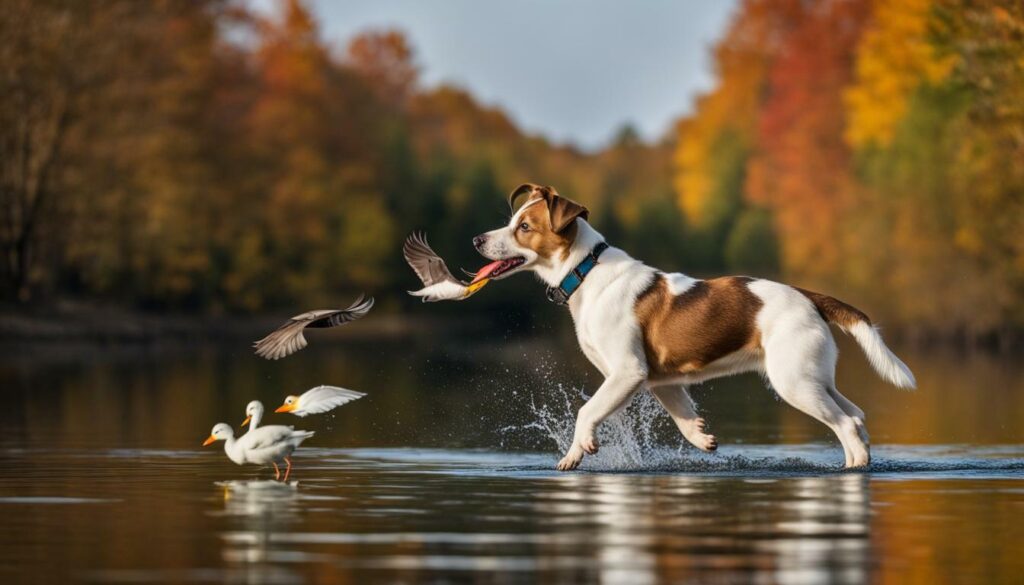
Scent Training: A puppy’s sense of smell is essential for successful bird hunting. Introduce scent training by hiding bird wings or feathers in the yard and encouraging your puppy to find them. Gradually increase the difficulty by hiding them in more complex locations.
Retrieval Training: Retrieval training is an essential skill for bird hunting. Start with short retrieves and gradually increase the distance and difficulty. Use positive reinforcement, such as treats and praise, to encourage your puppy’s progress.
By following these essential puppy training techniques specific to bird hunting, you can lay the foundation for a successful and fulfilling hunting experience with your dog.
Basic Obedience Training
Before you can begin advanced hunting training with your dog, it’s crucial to establish a solid foundation of basic obedience commands. Basic obedience training not only enhances communication and trust between you and your dog, but it also sets the groundwork for more advanced hunting training.
The fundamental commands that every hunting dog should know include “sit,” “stay,” “come,” and “heel.” Potty training is also a crucial part of basic obedience training.
Training your dog to “sit” requires luring them with a treat or a favorite toy and gradually introducing the verbal cue. Once your dog has learned to sit, move on to “stay,” teaching your dog to stay in the sitting position until given the release cue.
“Come” is another essential command that can be trained using positive reinforcement, such as treats or praise. Start by calling your dog’s name and rewarding them when they come to you, gradually increasing the distance and distractions over time.
“Heel” is a command that teaches your dog to walk alongside you on a loose leash. This behavior can be trained using positive reinforcement techniques, such as rewarding your dog for walking beside you without pulling on the leash.
Potty training is also a vital component of basic obedience training. Use consistent cues and rewards to teach your dog where and when to go potty, and always supervise them during this process.
Remember, basic obedience training should be consistent, patient, and positive. Make training sessions short and frequent, and always end on a positive note. With dedication and persistence, your dog will master these fundamental commands in no time.
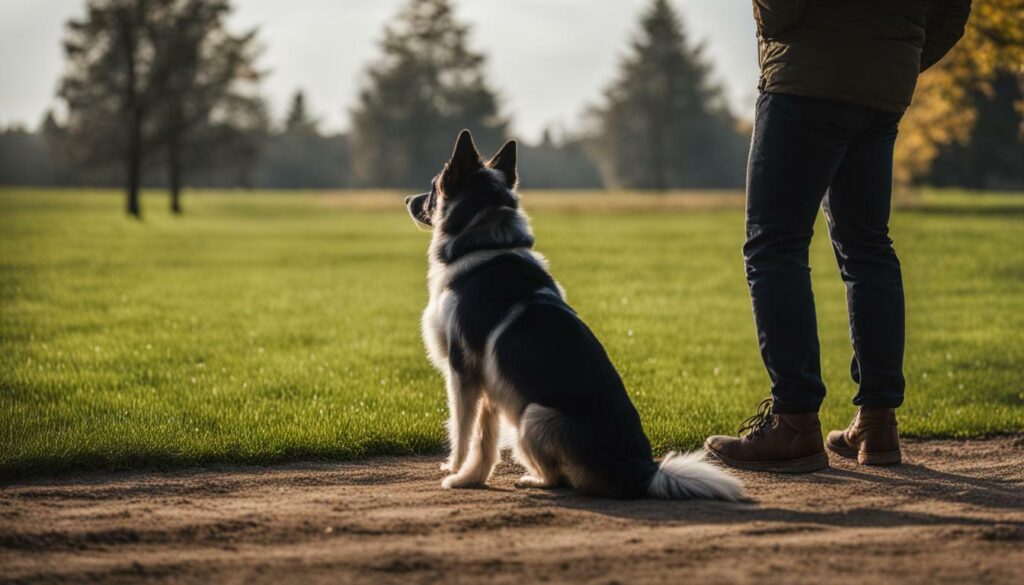
Bird scent training is an essential aspect of training a dog to hunt birds effectively. A dog’s natural ability to detect and follow a bird’s scent is a crucial skill in locating and retrieving birds.
The first step in bird scent training is introducing your dog to the scent of birds. You can begin by hiding a bird wing or game bird in an area with a high concentration of bird scent, such as a field or brush area. Allow your dog to explore the area and encourage them to sniff out the bird scent.
Once your dog has become accustomed to the scent, you can progress to dragging a bird wing or game bird along the ground to create a scent trail for your dog to follow. As your dog gets better at tracking the scent, you can increase the length and complexity of the scent trail.
It’s important to keep your dog enthusiastic and engaged during bird scent training. You can achieve this by using positive reinforcement techniques such as treats and praise.
It’s also crucial to ensure your dog is properly socialized and trained to respond to commands before beginning bird scent training. Your dog should have a solid foundation in basic obedience commands such as “sit,” “stay,” and “come.”
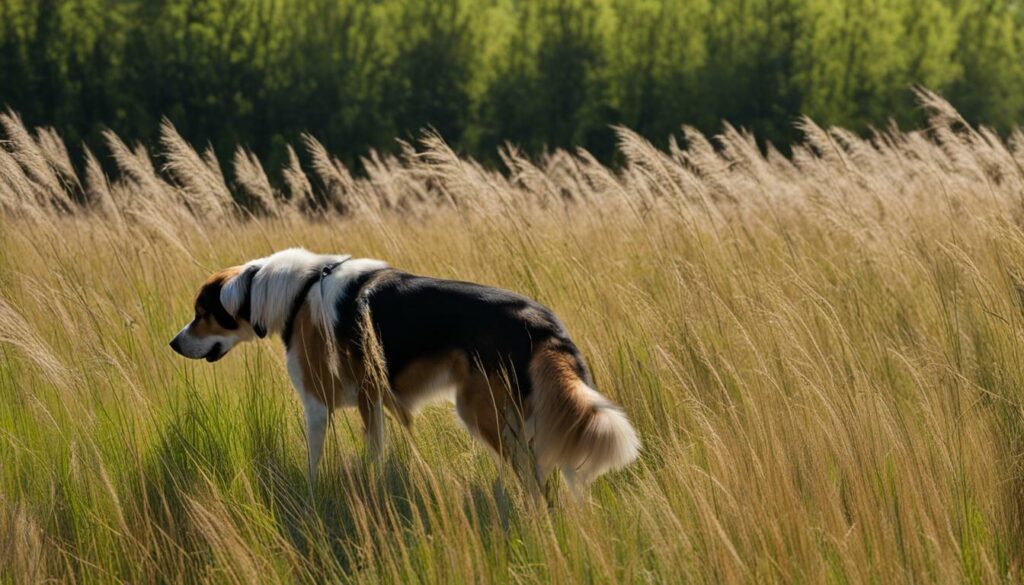
Building Retrieval Skills
Retrieving downed birds is a fundamental aspect of bird hunting, and it’s crucial to train your dog to do this safely and efficiently. In this section, we will provide step-by-step instructions on how to build and enhance your dog’s retrieval skills.
Step 1: Introduction to Retrieval
The first step in building retrieval skills is to introduce your dog to the concept of retrieving. Start by using a dummy or a toy to encourage your dog to pick it up and bring it back to you. Use a command such as “fetch” or “retrieve” to signal to your dog what you want them to do. Praise and reward your dog when they successfully retrieve the item.
Repeat this exercise several times until your dog understands the concept and is comfortable retrieving the dummy or toy.
Step 2: Adding Distance and Difficulty
Once your dog is comfortable with the basic retrieval exercise, it’s time to increase the difficulty and add distance. Start by throwing the dummy or toy a short distance and gradually increase the distance as your dog becomes more confident with retrieving. At this stage, you can also introduce obstacles such as water or bushes to make the exercise more challenging.
It’s important to continue using the same command signal and rewarding your dog for successful retrievals. This will reinforce the behavior and encourage your dog to retrieve in more challenging environments.
Step 3: Introducing Birds
The next step is to introduce your dog to the scent and feel of real birds. Start by using a dead bird or a bird wing to get your dog used to the scent. Encourage your dog to pick up the bird and retrieve it to you using the same command and reward system as before.
Gradually increase the difficulty by introducing birds in different environments and challenging your dog to retrieve them. It’s important to make sure your dog is comfortable with the process and doesn’t become gun-shy before introducing gunfire.
Step 4: Retrieving Downed Birds
When hunting birds, it’s crucial to train your dog to retrieve downed birds safely and efficiently. Start by using a bird launcher or another training aid to simulate a downed bird. Encourage your dog to retrieve the bird using the same command and reward system as before.
Once your dog is comfortable with simulated downed birds, it’s time to move on to real hunting scenarios. Start with easy hunts and gradually increase the difficulty as your dog becomes more confident.
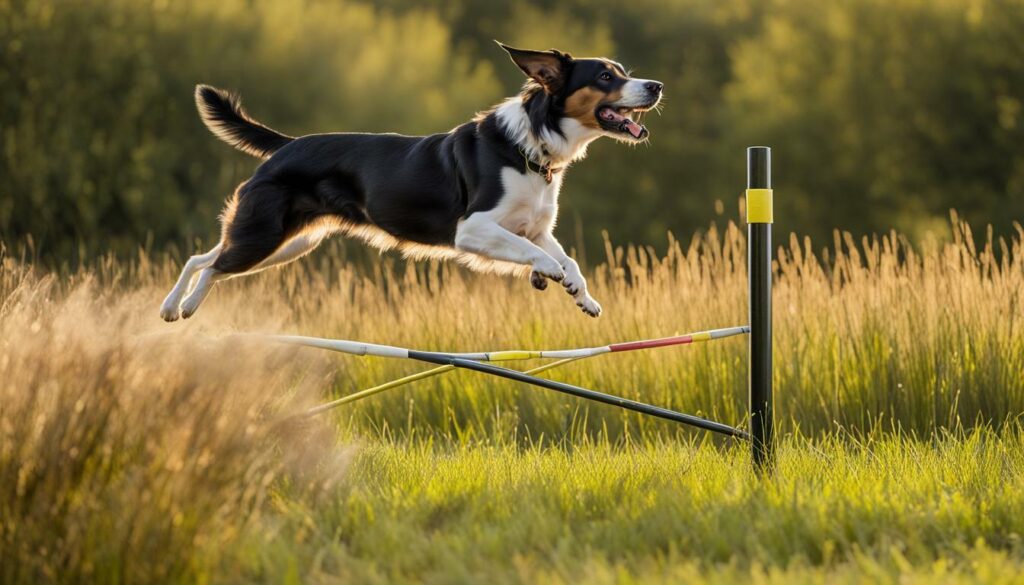
Remember to always prioritize safety when retrieving downed birds. Ensure that your dog doesn’t pick up a bird that is still alive or in an unsafe location. Training your dog to retrieve safely and efficiently will not only make your hunting experience more successful but will also keep your dog safe in the field.
Introducing Gunfire and Gun Safety
Before taking your hunting dog out in the field, it’s essential to ensure they are comfortable and desensitized to the sound of gunfire. Introducing your dog to gun sounds should be done gradually, with safety as the top priority.
One effective method is to start with a small-caliber gun or a cap gun, fired at a distance. Gradually move closer to your dog as they become more comfortable with the sound. Reward your dog with treats and praise to create a positive association with the sound of gunfire.
It’s also crucial to practice proper gun safety when hunting with your dog. Always point the gun in a safe direction, and never shoot unless you are sure of your target and what is beyond it. Ensure that you and your hunting companions are wearing appropriate safety gear, including hearing and eye protection.
When introducing your dog to gunfire, safety should always be the priority. With patience and positive reinforcement, your dog can become comfortable with the sound of gunfire and be ready for a successful hunting experience.
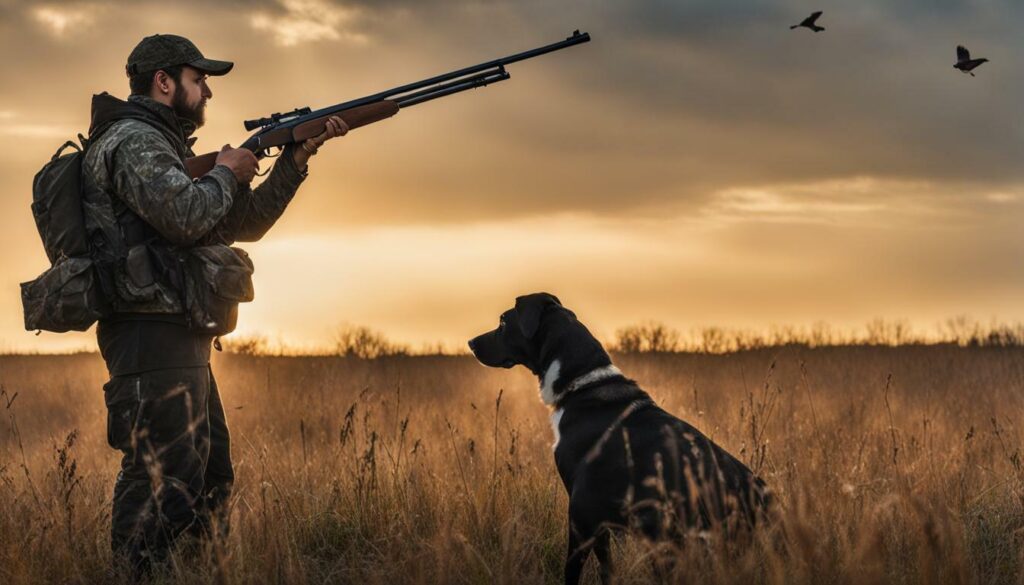
Once your dog has mastered the basics, it’s time to move on to more advanced bird hunting techniques. These techniques will fine-tune your dog’s hunting skills and help you achieve greater hunting success. Here are some advanced bird hunting techniques:
Quartering
Quartering is a technique used to search a hunting area methodically. Your dog will move back and forth in a zig-zag pattern, covering the hunting area thoroughly. This technique is especially useful for upland game bird hunting, where birds may be hidden in dense cover.
Flushing
Flushing is another technique for upland game bird hunting. Your dog will use its sense of smell to find birds and then flush them out of cover. This technique requires your dog to be able to move quickly and can be challenging to master.
Pointing
Pointing is a technique used for upland game bird hunting, particularly with breeds such as pointers and setters. Your dog will use its sense of smell to locate birds and then freeze in place, indicating the bird’s location to the hunter. This technique can be difficult to train, but it’s incredibly effective.
Blind Retrieves
Blind retrieves are an advanced technique used in waterfowl hunting. Your dog will retrieve a bird that it did not see fall. This technique requires your dog to have a strong sense of direction and the ability to follow hand signals from the hunter.
Multiple Retrieves
Multiple retrieves are another advanced technique used in waterfowl hunting. Your dog will retrieve multiple birds in succession, returning each bird to the hunter before retrieving the next. This technique requires your dog to have strong retrieving skills and the ability to follow direction.
By incorporating these advanced bird hunting techniques into your dog’s training regimen, you can enhance their hunting ability and improve your chances of a successful hunt.
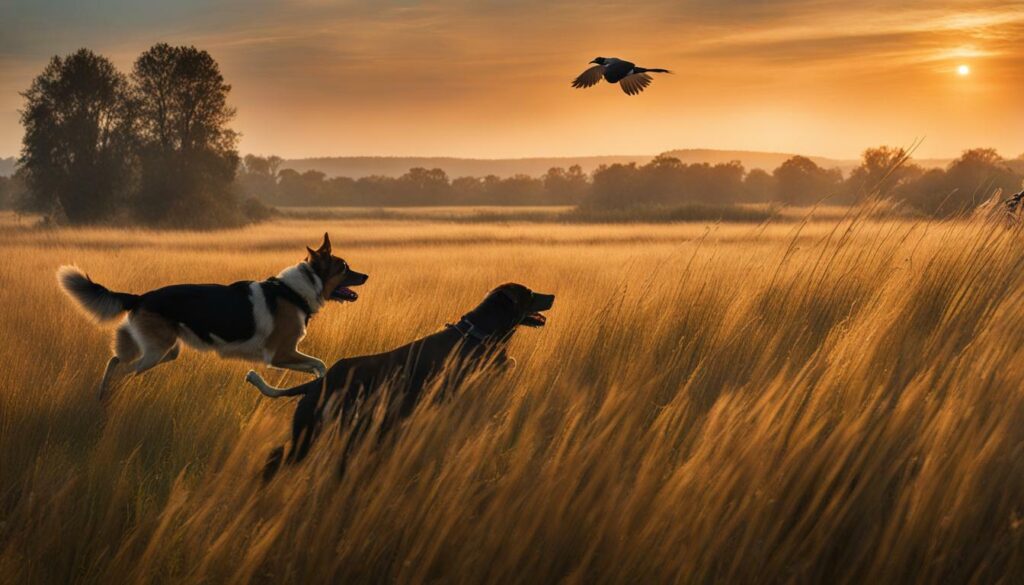
Field training is an essential part of preparing your dog for real-life hunting situations. It allows your dog to experience different terrains, weather conditions, and bird species. In this section, we will cover the following field training techniques for bird hunting:
Simulated Hunts
Simulated hunts are an excellent way to prepare your dog for the excitement and unpredictability of a real hunt. They allow you to control the training environment while still providing a realistic hunting experience for your dog.
To simulate a hunt, set up a course with bird wings or dummies in various locations. Encourage your dog to track and retrieve them as if they were real birds. Gradually increase the difficulty of the course by adding obstacles and distractions.
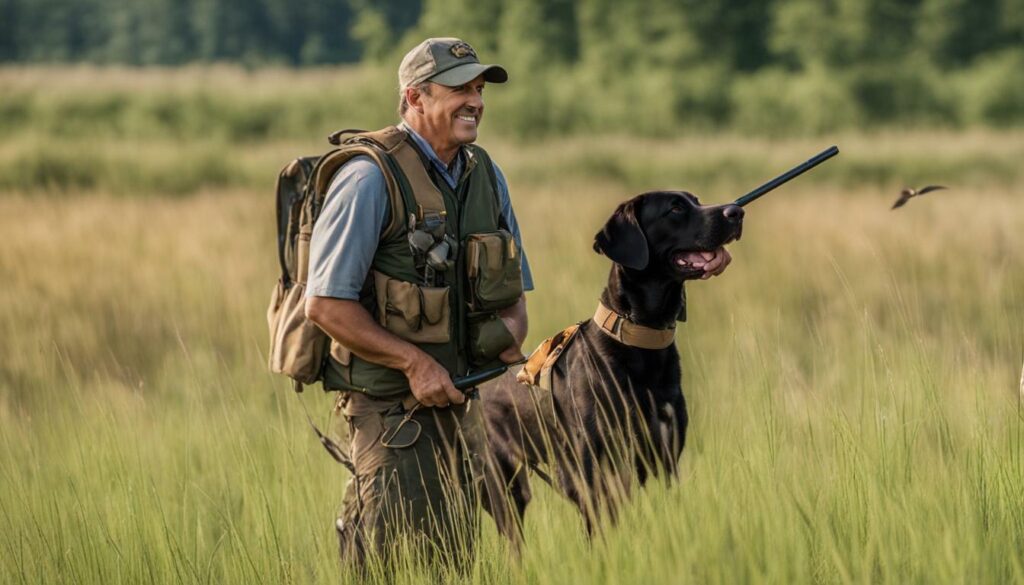
If you plan to hunt waterfowl, water training is essential. It helps your dog become comfortable in and around water and teaches them how to retrieve birds from the water.
Start by introducing your dog to shallow water and gradually increase the depth as they become more comfortable. Practice retrieving decoys or dummies from the water to develop their retrieval skills.
Upland Game Bird Training
Upland game bird training involves teaching your dog to track and flush out birds such as pheasants, quail, and grouse. It requires a different set of skills than waterfowl hunting, and therefore, specific training is necessary.
Set up a course with planted birds and encourage your dog to track and flush them out. You can also use a launcher to simulate birds taking flight. Gradually increase the difficulty of the course by adding more birds, obstacles, and distractions.
Small Game Training
Training your dog to hunt small game, such as rabbits or squirrels, involves teaching them to track and pursue these fast-moving animals. Small game training can be challenging, but it’s an excellent way to hone your dog’s hunting instincts.
To train your dog for small game hunting, set up a course with live rabbits or squirrels in cages. Encourage your dog to track and pursue them, but always ensure their safety and the safety of the small game animals.
With consistent field training, your dog will become a skilled and confident hunter, ready for any hunting scenario.
Hunting Etiquette and Safety Measures
While training your dog to hunt birds is an exciting experience, it’s essential to prioritize safety and adhere to hunting etiquette to ensure a safe and enjoyable hunting trip for all involved. Below are some safety measures and hunting etiquette guidelines to follow:
- Always follow local laws and regulations: Before heading out to hunt, make sure to familiarize yourself with local hunting laws and regulations. These laws may include requirements for licenses, permits, and restrictions on hunting areas, seasons, bag limits, and firearms.
- Practice gun safety: Gun safety is crucial when hunting with your dog. Make sure to always point your gun in a safe direction and keep it unloaded until you’re ready to shoot. Additionally, consider investing in blaze orange clothing to make sure you and your dog are visible to other hunters in the area.
- Beware of weather conditions: Weather conditions can impact both your dog’s safety and their ability to hunt efficiently. Make sure to check weather reports before heading out and dress your dog appropriately for the conditions.
- Respect other hunters: It’s essential to be respectful of other hunters in the area. Avoid crowding other hunters and their dogs and always ask permission before entering another hunter’s area.
- Communicate with your dog: Communication between you and your dog is crucial for safety in the field. Make sure to train your dog to respond to voice commands and use hand signals to avoid confusion.
- Never leave your dog unattended: Leaving your dog unattended in the field can be dangerous and can result in your dog getting lost or injured. Always keep your dog within sight and consider investing in a GPS tracking collar for added security.
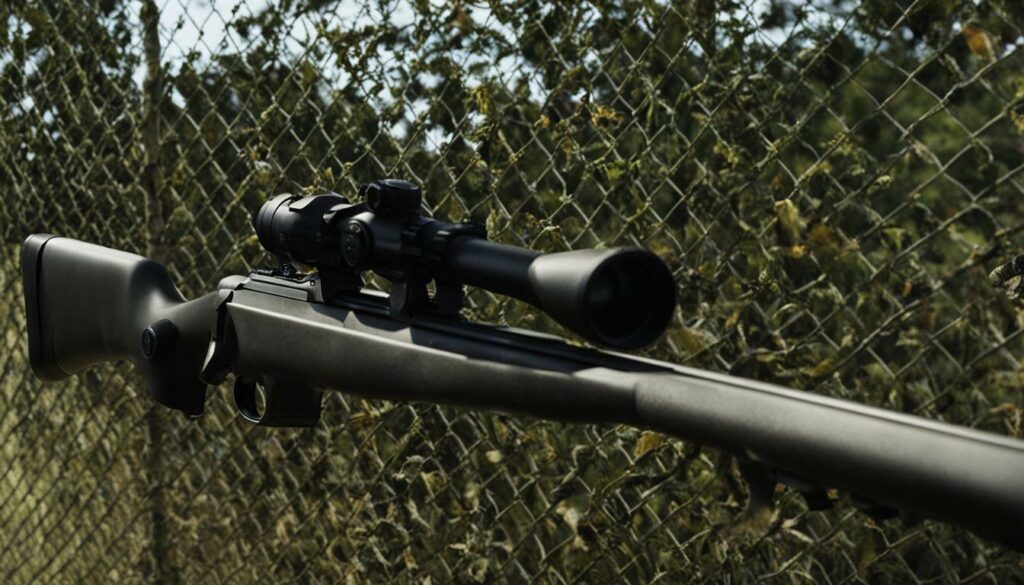
Training a dog to hunt birds can be a challenging process, and it’s not uncommon to encounter training issues along the way. It’s essential to identify and resolve these issues quickly to prevent them from affecting your dog’s progress. Here are some common training issues you may encounter during your dog’s bird hunting training and tips on how to overcome them:
| Issue | Solution |
|---|---|
| Inappropriate Behavior | If your dog exhibits undesirable behavior, such as chasing or attacking birds, stop training immediately. Revert to basic obedience training and reinforce commands such as “stay” and “leave it.” Gradually increase the level of difficulty and reward positive behavior. |
| Lack of Focus | If your dog is easily distracted and lacks focus, try increasing the level of exercise before training sessions. Incorporate games and activities that engage their hunting instincts, such as retrieving toys or scent games. Limit training sessions to shorter periods and gradually increase the duration. |
| Difficulty in Retrieval | If your dog struggles with the retrieval of downed birds, start by reinforcing basic retrieval skills, such as retrieving toys or tennis balls. Gradually introduce bird retrieval, starting with smaller birds and working up to larger game birds. Ensure your dog understands the “hold” command and rewards positive behavior with praise and treats. |
| Fear of Gunfire | If your dog displays fear or anxiety towards gunfire, start by introducing them to the sound of gunfire gradually. Start with low-volume recordings or distant gunfire and gradually work up to louder and closer sounds. Ensure your dog associates gunfire with positive experiences such as treats or praise. Never force your dog to confront their fear. |
Remember that every dog is unique, and some may require additional patience and training to overcome specific issues. Always reinforce positive behavior, use consistent training methods, and seek professional help if necessary.
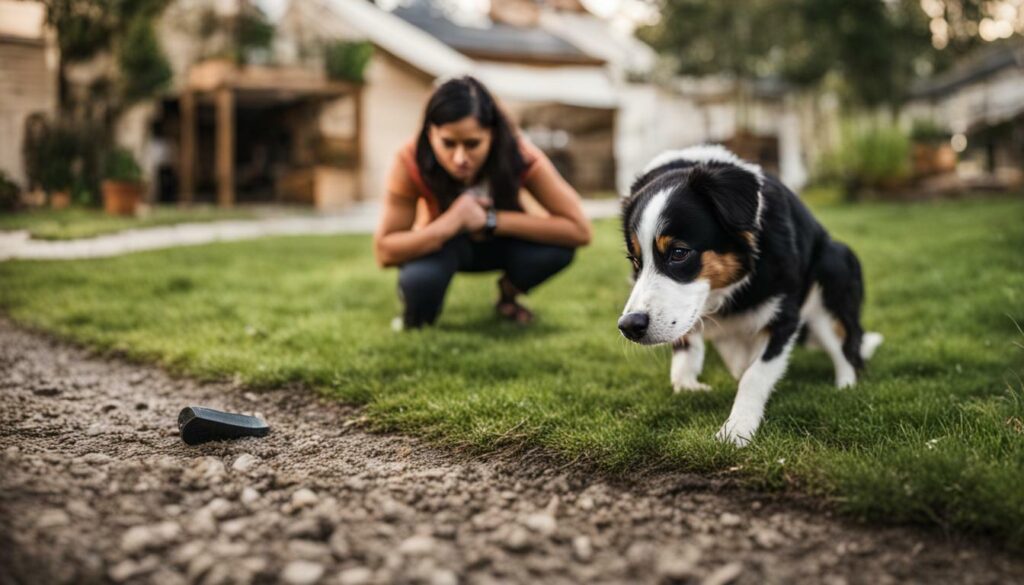
Training your dog to hunt different bird species requires a flexible approach and specific techniques. The training process will vary depending on the type of bird you are hunting, their habits, and their habitat. Here are some tips for training your dog to hunt different bird species:
Upland Game Birds
Upland game birds, such as pheasants, quail, and grouse, require different hunting techniques than waterfowl. These birds are often found in fields, grasslands, or wooded areas, so it’s essential to train your dog to hunt in these environments. Your dog should be trained to use their nose and eyes to locate the birds and flush them from cover.
To train your dog for upland game bird hunting, consider using a bird launcher or scent guides. A bird launcher will release a bird while your dog is on point, simulating a real hunting scenario. Scent guides, such as scented decoys or bird wings, can help your dog learn to follow bird scent and locate their prey.

Waterfowl hunting requires a different set of skills than upland game bird hunting. Ducks, geese, and other waterfowl are typically hunted in wetlands, marshes, or near bodies of water. Your dog should be trained to retrieve birds from the water and work in different water conditions.
To train your dog for waterfowl hunting, consider using decoys or training scents. Decoys can help your dog learn to identify and retrieve birds in the water, while training scents can help them learn to identify different waterfowl species.
Small Game
Small game hunting, such as rabbits or squirrels, requires a different approach than bird hunting. These animals are often hunted in wooded areas or fields, so your dog should be trained to track scents and locate prey in cover.
To train your dog for small game hunting, consider using scent guides or live traps. Scent guides can help your dog learn to track small game scents, while live traps can help your dog learn to locate and retrieve prey.
Remember to always train your dog in a safe and controlled environment, and use positive reinforcement techniques to encourage good behavior. With patience and dedication, you can train your dog to hunt a variety of bird species and enjoy a rewarding hunting experience together.
Training for Competition and Trials
Participating in hunting competitions or trials can be a fun way to showcase your dog’s hunting abilities and bond with other hunting enthusiasts. However, training for competition and trials requires specialized techniques to ensure your dog is prepared for the unique challenges they will encounter.
One essential aspect of competition training is conditioning your dog to handle the stress and excitement of the event. Exposing your dog to different environments, situations, and distractions can help prepare them for the excitement of the competition.
Another critical component of competition training is teaching your dog to work with you as a team. In many competitions, you’ll be required to work closely with your dog to complete tasks and overcome obstacles. Developing effective communication skills and building a trusting relationship with your dog is essential.
When training for competition and trials, it’s also important to focus on refining your dog’s hunting skills. Practice advanced techniques, such as quartering and flushing, and work on improving your dog’s timing and accuracy.
Lastly, remember that training for competition and trials should be a fun and rewarding experience for both you and your dog. Don’t get caught up in the competition aspect, but instead enjoy the process of working with your dog to improve their hunting abilities and deepen your bond.
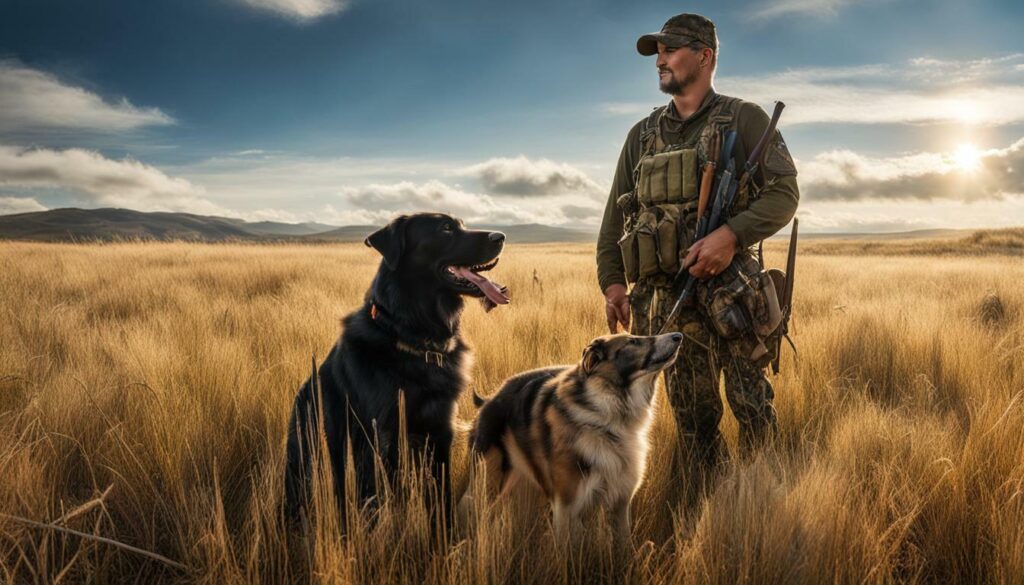
By following these training techniques, you can prepare your dog for success in hunting competitions and trials. Remember to stay patient and consistent, and always prioritize your dog’s health and safety above all else.
Building a Strong Bond with Your Hunting Dog
Building a strong bond with your hunting dog is essential for a successful and enjoyable hunting experience. Dogs are social animals, and they thrive on positive interaction with their owners. By strengthening your relationship with your canine companion, you can improve communication, enhance trust, and cultivate a more effective hunting team.
Here are some tips on how to build a strong bond with your hunting dog:
- Show affection: Dogs respond positively to physical touch, such as petting, hugging, and cuddling. Spend time each day showing your dog affection to reinforce your bond.
- Communicate clearly: Consistent communication is key to building trust between you and your dog. Use clear, concise commands and positive reinforcement to reward good behavior.
- Train regularly: Training sessions provide an opportunity for bonding and can help build your dog’s confidence and skills. Make training a fun, interactive experience for both you and your dog.
- Play together: Playtime is an important part of your dog’s mental and physical well-being. Take time each day to engage in play with your dog, whether it’s fetch, tug-of-war, or hide-and-seek.
- Go on walks: Walking together is an excellent way to bond with your dog. It provides exercise, mental stimulation, and quality time together.

Remember, building a strong relationship with your hunting dog takes time and effort. By incorporating these tips into your training routine, you can strengthen your bond and enjoy a more successful hunting experience together.
Conclusion
In conclusion, training your dog to hunt birds is not only a rewarding experience but also a fulfilling one. By understanding your dog’s natural hunting instincts, choosing the right breed, and following the essential training techniques outlined in this guide, you can ensure a successful hunting experience with your furry companion.
Remember to begin training during the puppy stage and provide a strong foundation in basic obedience commands before moving on to advanced hunting techniques. Building your dog’s bird scent training skills and retrieval abilities, introducing gun sounds and safety, and transitioning to field training are crucial steps to prepare your dog for real-life hunting scenarios.
It’s also important to prioritize safety measures and adhere to proper hunting etiquette when in the field. If you encounter any training issues, do not worry. Our troubleshooting guide can help overcome any obstacles you may face during the training process.
Whether you’re hunting upland game birds, waterfowl, or small game, the right training techniques can ensure success. And if you’re interested in showcasing your dog’s hunting skills in competitions or trials, specialized training methods are available to get you there.
Ultimately, building a strong bond with your hunting dog is key to a successful partnership. Strengthen your relationship, improve communication, and enhance trust with your furry friend for a fulfilling and enjoyable hunting experience. So why wait? Start your training journey today!
FAQ
Q: What is the purpose of this guide?
A: This guide is designed to provide effective techniques and strategies for training your dog to hunt birds.
Q: Why is understanding the hunting instinct important?
A: Understanding your dog’s inherent hunting instinct is crucial for their training success in bird hunting.
Q: Which dog breeds are best for bird hunting?
A: Certain dog breeds have a natural inclination towards bird hunting. We will discuss the best breeds in this guide.
Q: When should I start training my dog for bird hunting?
A: Early training during the puppy stage provides a solid foundation for developing hunting skills in dogs.
Q: Is basic obedience training necessary?
A: Yes, having a strong foundation in basic obedience commands is important before progressing to advanced hunting training.
Q: How do I introduce my dog to bird scent training?
A: This guide will teach you the basics of bird scent training and how to encourage your dog’s natural tracking instincts.
Q: How can I build my dog’s retrieval skills?
A: We will provide step-by-step instructions to help you build and enhance your dog’s retrieval skills for bird hunting.
Q: How do I introduce my dog to gunfire?
A: Proper introduction to gun sounds and gun safety is essential for a successful hunting experience. We will guide you through the process.
Q: What are some advanced bird hunting techniques?
A: This guide will delve into more complex training methods, such as quartering, flushing, and pointing.
Q: How can I prepare my dog for real hunting situations?
A: Field training techniques, including simulated hunts, will be covered to help you prepare your dog for real-life hunting scenarios.
Q: What safety measures should I take when hunting with my dog?
A: We will discuss important safety measures and proper hunting etiquette to ensure the well-being of your dog and others in the field.
Q: What do I do if I encounter training issues?
A: This guide will address common problems that may arise during the training process and provide effective solutions to overcome them.
Q: Are there specific training methods for different bird species?
A: Yes, we will explore training methods tailored to hunting different bird species, including upland game birds, waterfowl, and small game.
Q: How can I train my dog for hunting competitions and trials?
A: If you’re interested in showcasing your dog’s hunting skills, we will discuss specialized training methods for competition and trials.
Q: How can I build a strong bond with my hunting dog?
A: Strengthening your relationship, improving communication, and enhancing trust with your hunting companion will be covered in this guide.
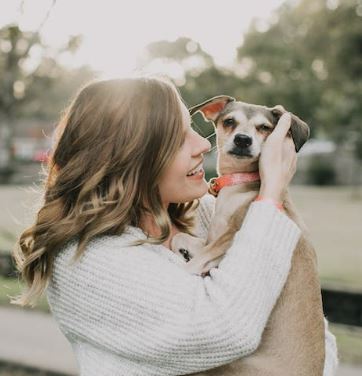
Marissa Delotta, 36, from Dayton, Ohio, is the creative force behind Roverboard.com, a beloved online destination for dog lovers. As a dedicated mom and canine enthusiast, Marissa combines her family experiences with her love for dogs to offer a platform where dog owners can exchange tips, heartwarming stories, and advice. Her website has become a vibrant community for sharing the joys of dog parenting. In her free time, Marissa enjoys exploring dog parks with her family and volunteering at local animal shelters.